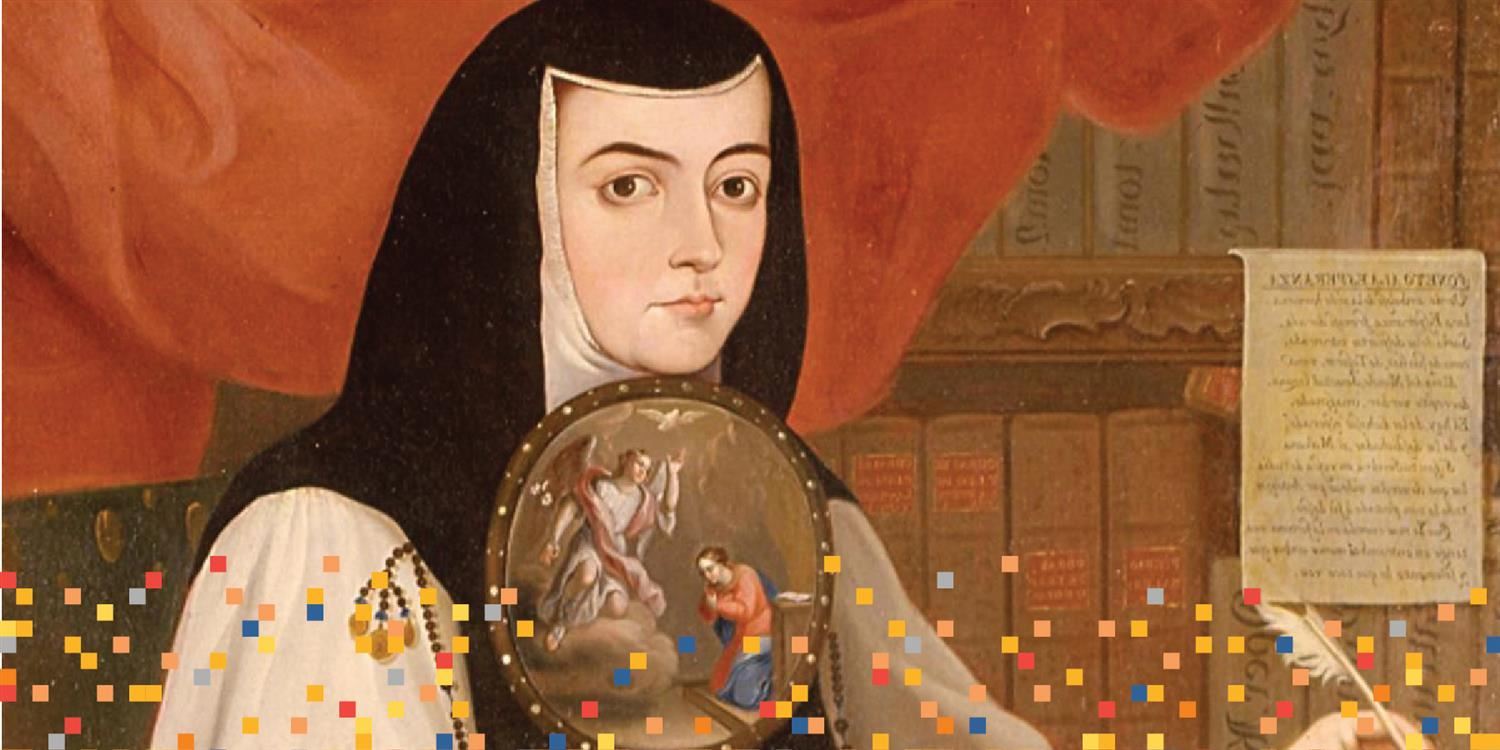- Sor Juana Elementary
- Background

-
Who was Sor Juana?
Sor Juana Inés de la Cruz was born November 12, 1651 near Mexico City. As a young child, Juana would often hide in her grandfather’s hacienda reading the books from his adjoining library, something that was forbidden to girls. She thirsted for knowledge from her earliest years and throughout her life as evidenced by her academic accomplishments:- By three she could read and write.
- By five she could reportedly do accounts.
- By eight she had composed her first poem.
- By adolescence she had mastered Greek logic.
- By 13 she was teaching Latin to young children, had learned the Aztec language of Nahuatl and wrote some short poems in that language.
As a female, she had little access to formal education and was almost entirely self-taught. Her life as a nun gave her plenty of time to study and write, the opportunity to teach music and drama to the girls in Santa Paula’s school, and have her own apartment. In this apartment, she collected one of the largest private libraries in the New World, including a collection of musical and scientific instruments. She also functioned as the convent’s archivist and accountant.
Sor Juana is remembered as a poet, dramatist, scholar, nun, and one of the earliest proponents of women’s rights. Because of rising interest in feminism and women’s writing, Sor Juana came to new prominence in the late 20th century as the first published feminist. She now stands as a national icon of Mexico and Mexican identity:- Her former cloister is a center for higher education.
- Her image adorns Mexican currency.
- She is known as “The Tenth Muse” and the “Mexican Phoenix”.
Sor Juana remains avidly read and deeply meaningful to the present day.
Why Sor Juana?To honor the history of the building
Given that Sor Juana was a nun during the 16th century and our new school was formerly a Catholic School, it is a fitting name that honors the transition of what the school previously stood for while also ushering in the new.
To connect the past, present, and future
Through her writing, Sor Juana has captured a significant part of our past. Her Mexican heritage is representative of much of the present community. And she stands as a model of what the school will accomplish within both the Classical and STEAM programs through the integration of the arts and sciences.
To aspire to her level of scholarship
Sor Juana was known for her thirst for knowledge. In her most famous poem “Primero Sueño” (First Dream), she recounts the soul’s quest for knowledge.

